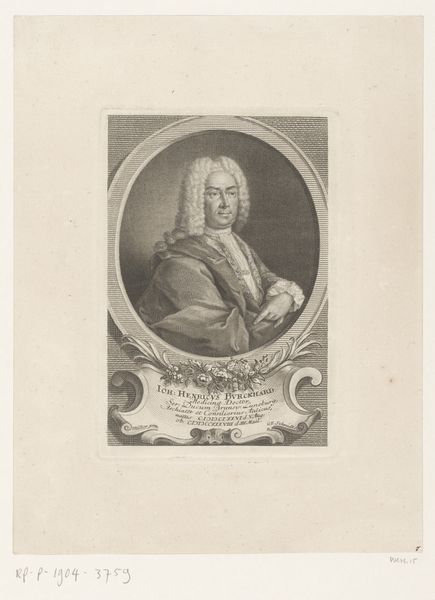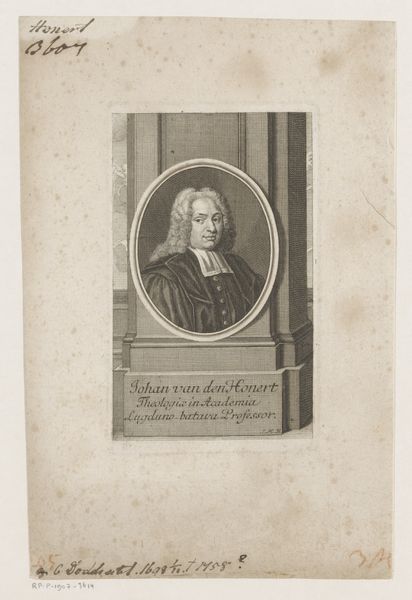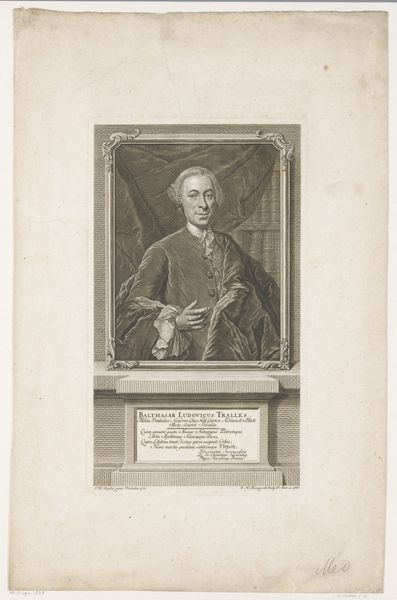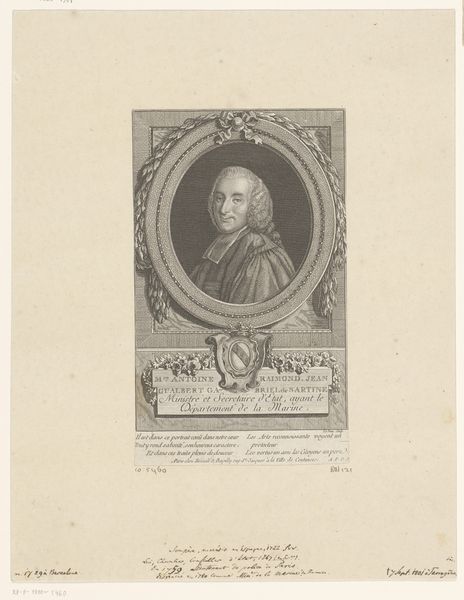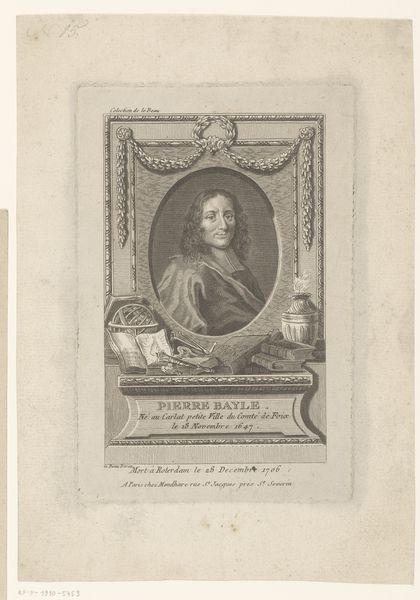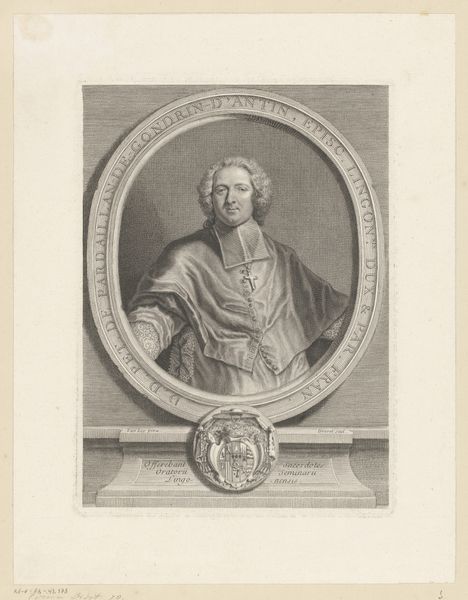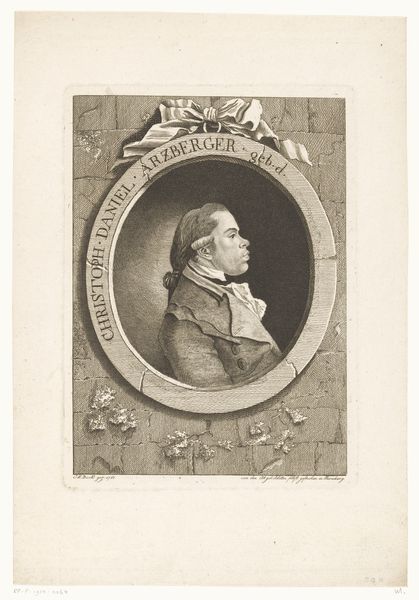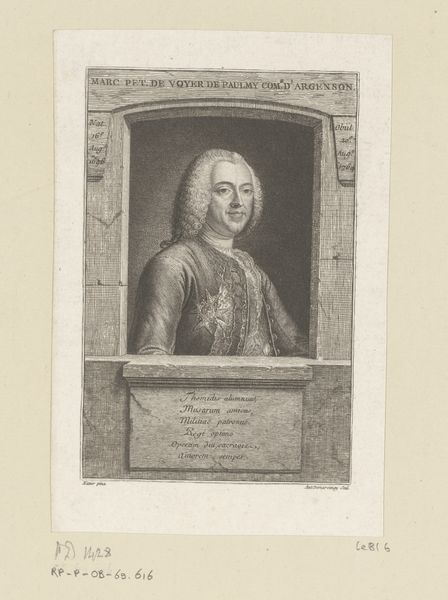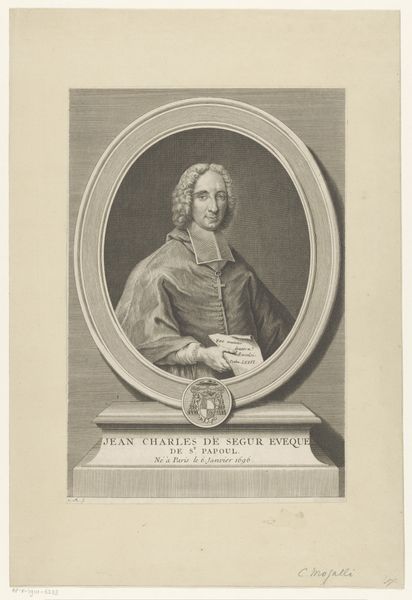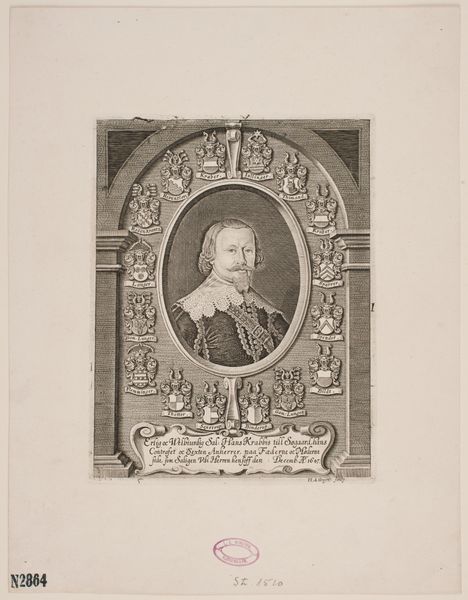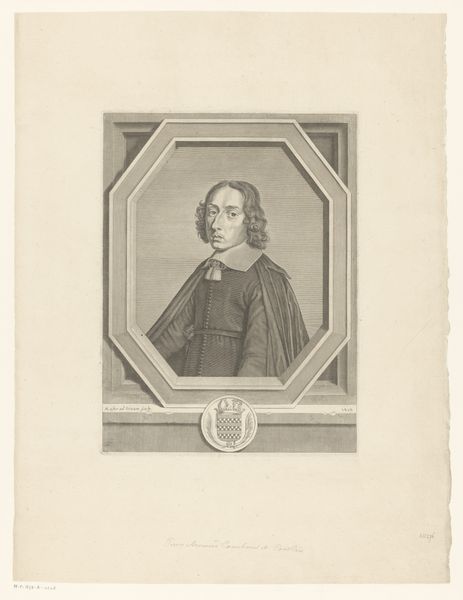
Dimensions: height 385 mm, width 277 mm
Copyright: Rijks Museum: Open Domain
Curator: Let’s discuss this remarkable engraving, "Portret van Christian Siegmund Horn," created by Johann Friedrich Bause between 1766 and 1771. Editor: My first impression is of a man encased in stone, as if memory has been rendered material. There’s a stark formality to the image; it feels deliberately constructed, controlled. Curator: Indeed. The Baroque style emphasizes realism, but also control. Bause likely worked from a painted portrait of Horn. Note the detail etched into paper: the soft fall of fabric, the carefully described features of the face. It evokes questions of representation and power: how do we immortalize a figure like this? How does art reflect their societal role? Editor: For me, it’s the inscription and heraldry below the portrait itself that ground it in material history. These aren’t just abstract symbols. These engravings denote status and power—materials deployed for ideological ends. The inscription clearly details Horn’s service, reminding us that paper, ink, and engraving are also means of recording labor. Curator: Exactly! It’s not merely a likeness; it’s a carefully curated representation intended to cement Horn’s legacy. Consider also the framing arch, which feels classical, and offers a commentary on historical precedent and notions of eternal significance. This type of visual rhetoric always prompts me to consider how such images influence collective memory and perceptions of leadership and privilege. Editor: I'm especially drawn to the texture achieved in this engraving, the product of Bause's manual skill. He deployed cross-hatching to capture the tones and shadows of Horn's face. It's also significant to remember this image was mass-produced. These were likely circulated—further amplifying Horn's influence. The work embodies how artistic production can be intertwined with material dissemination. Curator: Reflecting on this piece, I am reminded of how artistic practices play a part in constructing historical narratives and how portraits are loaded with encoded political meanings. Editor: And for me, considering this engraving reminds us of the significance of analyzing not just *what* is represented but *how* those material choices shaped its legacy.
Comments
No comments
Be the first to comment and join the conversation on the ultimate creative platform.

